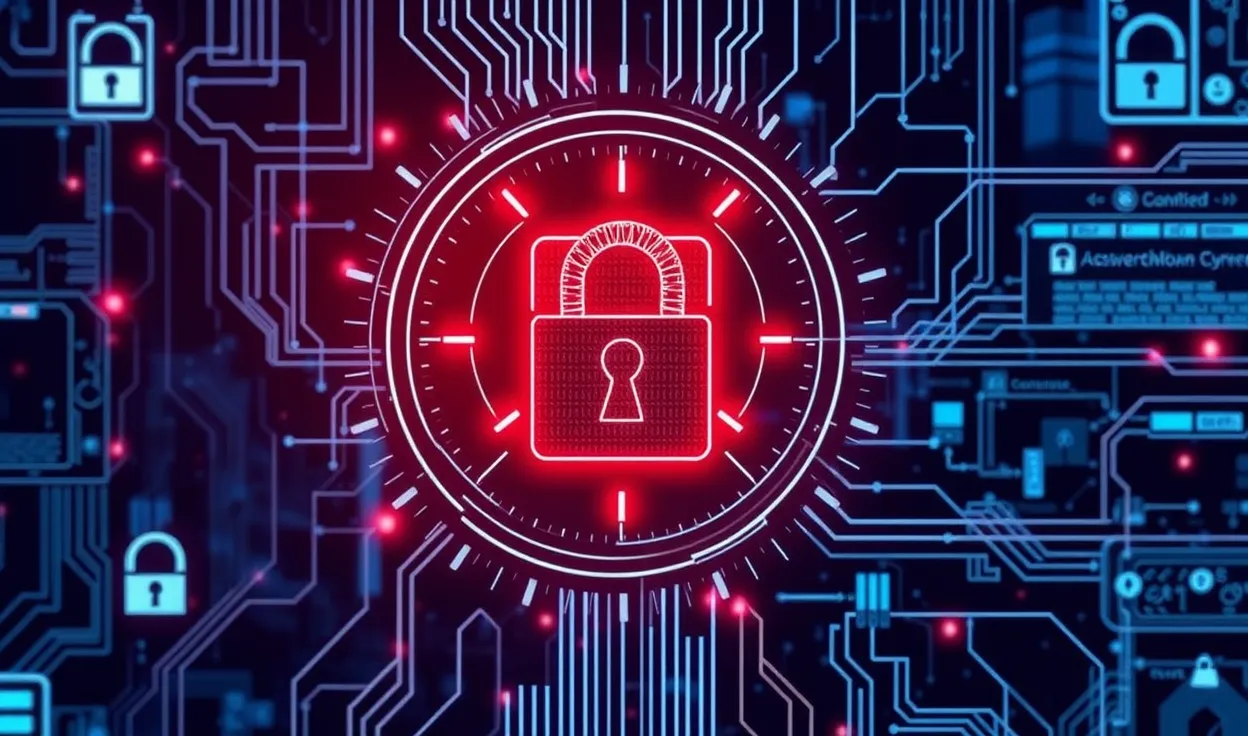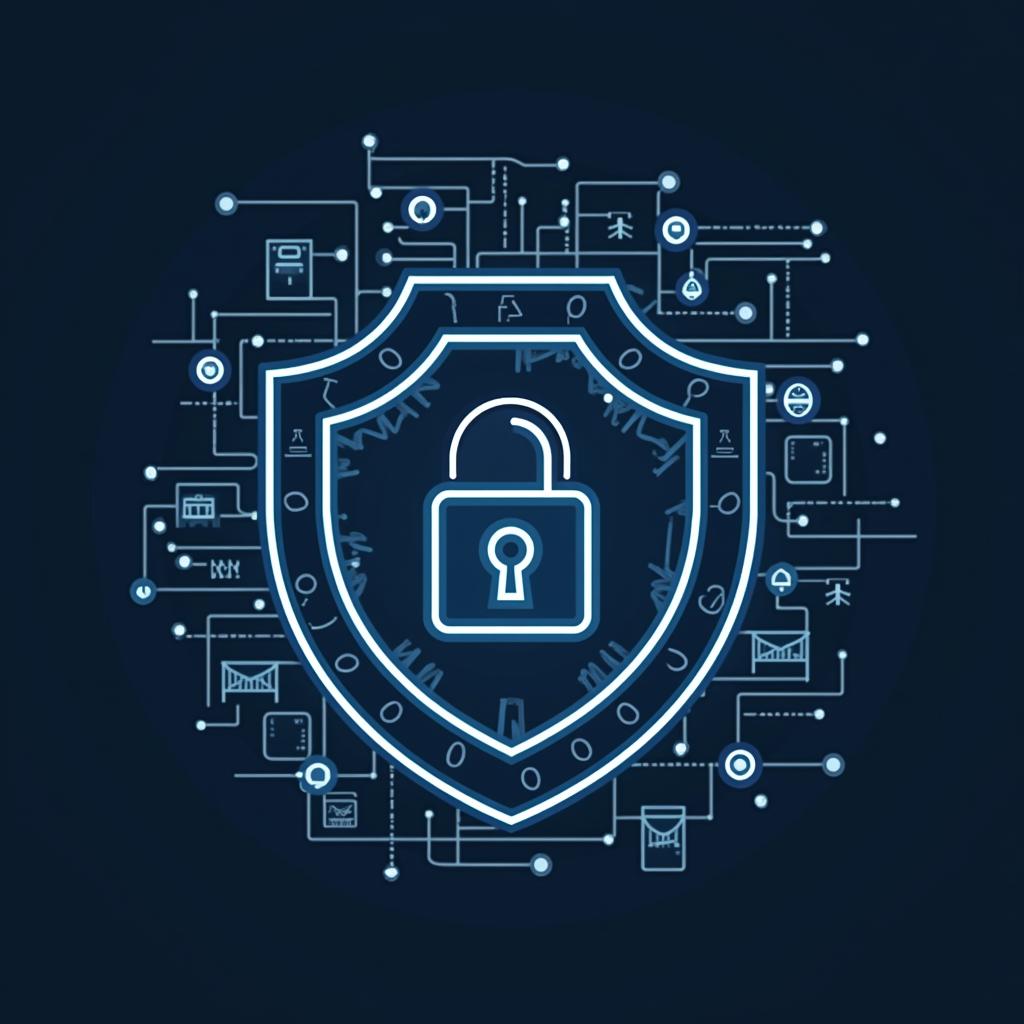
Zero-Shot Learning in cybersecurity isn’t just a technological innovation—it represents a paradigm shift. Zero-Shot Learning (ZSL) emerges as a game-changer.
In this article, we’ll dive into how ZSL reshapes the cybersecurity landscape, enabling detection of threats that traditional systems miss. Let’s explore its potential to revolutionize threat detection and management.
What is Zero-Shot Learning in Cybersecurity?
Understanding the Basics of ZSL
Zero-Shot Learning refers to a machine learning model’s ability to recognize unseen data. Instead of requiring explicit examples for every scenario, ZSL leverages semantic knowledge to infer solutions.
In cybersecurity, this translates to identifying new attack types without prior exposure to their patterns. It’s like spotting a counterfeit coin based on general knowledge of what “authentic” coins look like.
Why Conventional Systems Struggle
Most cybersecurity tools rely on pre-defined signatures or behavior-based rules. They excel at identifying known threats but fail against novel exploits. Zero-day vulnerabilities, for instance, exploit this blind spot, wreaking havoc until updated defenses are deployed.
This gap is where ZSL shines, offering adaptability and foresight in environments where the unexpected is the norm.
How Zero-Shot Learning Detects Emerging Threats
Leveraging Knowledge Representations
ZSL models use knowledge graphs, embeddings, and other structured representations to link known concepts with unknown scenarios. For instance, if malware modifies a file type not commonly associated with cyberattacks, ZSL might flag it based on deviations in expected behavior.
Such semantic inferences allow cybersecurity tools to operate beyond the confines of explicit rule sets.
Behavioral Anomalies as Indicators
One of ZSL’s core strengths is identifying behavioral anomalies. A network traffic spike during off-peak hours, unusual API calls, or rogue processes may signal malicious activity.
By cross-referencing patterns, ZSL algorithms can assess whether these deviations align with characteristics of past threats, even if they’re entirely novel.
Applications of ZSL in Cyber Defense

Advanced Threat Detection
Zero-shot models excel in recognizing advanced threats such as fileless malware, which evade traditional detection mechanisms. By evaluating command execution paths or memory behavior, ZSL can spotlight malicious operations in real-time.
Proactive Incident Response
Imagine detecting and mitigating a ransomware attack before encryption begins. ZSL equips Security Operations Centers (SOCs) with the capability to predict and act on potential threats.
This proactive edge helps minimize downtime, data loss, and business continuity risks.
Challenges and Limitations of ZSL in Cybersecurity
Data Bias and Overfitting
For ZSL to function effectively, the underlying data must be diverse and unbiased. Over-reliance on narrow datasets can skew predictions, resulting in false positives or negatives.
Ensuring broad, well-curated input sources is essential to maintain accuracy and trust in these systems.
Computational Intensity
ZSL models are resource-intensive. They require powerful GPUs and efficient algorithms to process vast datasets. Smaller organizations might face hurdles in deploying these solutions due to high infrastructure costs.
Unleashing Zero-Shot Learning’s Full Potential in Cybersecurity
ZSL Enables Adaptive Threat Intelligence

Most cybersecurity frameworks work reactively, responding to attacks after they occur. With ZSL, the game changes to one of adaptation and anticipation. For example:
- Mapping Attack Similarities: ZSL can correlate patterns from a minor phishing attempt in one region to a large-scale social engineering attack in another. This capability turns scattered data points into actionable intelligence.
- Real-time Threat Evolution: Cybercriminals evolve tactics rapidly. ZSL’s ability to recognize patterns in unseen attack vectors ensures continuous learning without frequent model retraining.
By enhancing threat intelligence, ZSL fosters proactive security measures that minimize risk.
Enhanced Defense for IoT and Edge Computing
The rise of IoT and edge devices introduces vulnerabilities on a massive scale. Unlike centralized systems, IoT devices often lack robust security features, making them prime targets.
ZSL to the Rescue:
- Device-specific Threat Detection: ZSL can quickly identify anomalies across a network of IoT devices, even if the attack is previously unseen.
- Localized Security Models: By integrating ZSL into edge computing systems, organizations can deploy lightweight AI models that identify threats directly at the device level.
This distributed approach ensures faster detection and minimal latency in incident response.
Human-Machine Collaboration in Cyber Defense
ZSL isn’t about replacing human analysts—it’s about empowering them. Here’s how:
- Fewer False Positives: ZSL reduces the noise in cybersecurity alerts, ensuring analysts focus on genuine threats.
- Explaining Unknown Threats: ZSL tools can provide contextual insights into how they identify anomalies, aiding analysts in understanding and responding to new attack vectors.
This blend of AI-driven precision and human expertise creates a robust, collaborative defense framework.
Dynamic Adaptability Through Transfer Learning
ZSL thrives when paired with transfer learning, which allows knowledge from one domain to be applied to another. For example:
- A ZSL model trained on financial sector attacks could seamlessly adapt to healthcare threats, thanks to shared underlying patterns like phishing or credential harvesting.
This dynamic adaptability ensures organizations stay one step ahead of cybercriminals, regardless of the sector or environment.
The Future of ZSL in Detecting Cyber Threats
Emerging technologies like federated learning and contextual AI will further enhance ZSL’s capabilities. These innovations promise even greater adaptability and precision in identifying zero-day threats and previously unseen vulnerabilities.
As we venture into this brave new world, integrating ZSL into cybersecurity strategies is more than just innovation—it’s a necessity.
FAQs
Is Zero-Shot Learning practical for real-time threat detection?
Yes, ZSL excels at real-time detection. Its ability to process semantic relationships and identify anomalies makes it highly efficient in dynamic environments. For instance, if an attacker initiates a fileless malware attack that doesn’t leave traces in traditional logs, ZSL can still detect irregular patterns like unusual memory usage or unauthorized API calls.
This speed and adaptability make it a valuable tool for real-time threat mitigation.
What are some real-world examples of ZSL in cybersecurity?
An excellent example of ZSL is its use in combating zero-day vulnerabilities. Imagine an organization under attack by malware that exploits a flaw not yet discovered by security researchers. Traditional systems might miss it entirely, but ZSL can identify the suspicious activity based on contextual patterns like unusual outbound traffic or processes accessing sensitive data.
Another real-world application is in IoT security, where ZSL is deployed to monitor millions of devices for abnormal activity, even when specific threat signatures are unavailable.
Can ZSL help in reducing false positives?
Absolutely! False positives are a major pain point in cybersecurity. Traditional systems, relying on rigid rules, often flag benign activity as malicious. For instance, legitimate large data transfers in a company might trigger alerts in conventional systems.
ZSL analyzes contextual behavior, making nuanced decisions to avoid unnecessary alerts. By focusing on behavioral anomalies rather than predefined rules, ZSL ensures a higher accuracy rate.
What industries can benefit the most from Zero-Shot Learning?
While ZSL can be beneficial across industries, some sectors stand out:
- Financial Services: Detecting fraud patterns in online banking or credit card transactions.
- Healthcare: Securing sensitive patient data against ransomware attacks.
- Critical Infrastructure: Identifying potential threats to power grids or water systems, which often have unmonitored legacy devices.
In healthcare, for example, ZSL might flag unusual access to patient records after hours, even if it’s a brand-new attack strategy.
What role does data quality play in ZSL’s effectiveness?
High-quality, diverse datasets are crucial for ZSL models. Poor data leads to biased or incomplete knowledge representations, reducing effectiveness. For example, if a ZSL model is trained mainly on desktop malware patterns, it might struggle with attacks targeting mobile devices.
Organizations should prioritize creating robust, unbiased datasets and leverage domain-specific knowledge graphs to optimize performance.
How does ZSL handle advanced persistent threats (APTs)?
APTs are sophisticated, long-term cyberattacks designed to infiltrate networks undetected. ZSL combats these by analyzing long-term behavioral changes. For instance, if an APT slowly exfiltrates data over weeks, ZSL could spot incremental anomalies like repeated small transfers to suspicious IPs.
This ability to recognize patterns over time makes ZSL a powerful tool against stealthy threats.
What are the limitations of Zero-Shot Learning in cybersecurity?
ZSL isn’t without challenges:
- High Computational Demand: Running ZSL models can be resource-intensive, requiring significant processing power.
- Reliance on Context: Poor contextual data or missing semantic relationships may lead to false negatives. For example, if certain attack behaviors are too novel or rare, ZSL might overlook them.
Despite these challenges, ongoing advancements in AI, like contextual learning, are helping mitigate such limitations.
How can small businesses leverage Zero-Shot Learning?
Small businesses can adopt ZSL through cloud-based cybersecurity solutions that integrate the technology. For instance, many managed security service providers (MSSPs) now offer ZSL-powered threat detection as part of their services.
A small e-commerce store might use such a solution to detect unusual login attempts, such as logins from an unexpected geographic location, even if that behavior has no prior precedent in its system.
How does ZSL interact with existing cybersecurity systems?
Zero-Shot Learning doesn’t replace traditional systems but complements them. For instance:
- It works alongside signature-based tools to detect known threats while addressing gaps with unknown threats.
- In behavioral analysis systems, ZSL enhances accuracy by flagging activities outside normal behavior without relying solely on past data.
An example is integrating ZSL into a Security Information and Event Management (SIEM) system. While the SIEM identifies patterns based on logs, ZSL can flag anomalies even if they deviate from historical trends.
Can ZSL help identify insider threats?
Yes, ZSL is particularly adept at spotting insider threats, which are often harder to detect due to their access privileges. For example:
- An employee suddenly transferring large amounts of sensitive files to external drives.
- Irregular login times or attempts to access systems outside their role.
By recognizing these behavioral deviations, ZSL can alert security teams to potential insider risks before they escalate.
How scalable is ZSL for large organizations?
ZSL is highly scalable, especially in cloud-based environments. Large organizations can deploy ZSL across:
- Distributed networks to monitor traffic between multiple offices or regions.
- IoT ecosystems, ensuring all devices are analyzed for unusual activity.
For example, a global enterprise using ZSL can detect coordinated attacks across different geographies, such as simultaneous unauthorized logins from various locations.
How does ZSL handle encrypted traffic?
Encrypted traffic poses a challenge for many cybersecurity systems, as malicious activities can be hidden. ZSL tackles this by analyzing metadata and patterns within the encrypted flow, such as:
- Packet size and frequency.
- Destination IP reputation.
For instance, if encrypted traffic is suddenly routed to a known malware command-and-control server, ZSL can flag it without decrypting the content.
Does ZSL work well with threat intelligence feeds?
Absolutely. Threat intelligence feeds provide critical context for ZSL systems. Here’s how they work together:
- Threat feeds offer data about emerging exploits or malicious IPs.
- ZSL uses this information to extend its knowledge graph, linking known threats to potential unknown ones.
For example, if a threat feed identifies a new ransomware strain using unusual file types, ZSL could recognize similar behavior in future attacks.
What industries might struggle with ZSL adoption?
Industries with limited data or strict compliance requirements may face hurdles in adopting ZSL. For instance:
- Small healthcare providers might lack the diverse data needed for effective ZSL deployment.
- Highly regulated sectors, like government agencies, might be cautious about sharing sensitive data required for training ZSL models.
However, as privacy-preserving AI methods like federated learning evolve, these barriers are gradually diminishing.
How does ZSL handle polymorphic or metamorphic malware?
Polymorphic malware alters its code to evade detection, while metamorphic malware rewrites itself entirely. ZSL addresses these threats by focusing on behavioral traits rather than code signatures.
For example:
- If a polymorphic virus encrypts files in an unusual order, ZSL identifies this anomaly even if the malware’s code changes.
- It can detect shared behavioral hallmarks, like how the malware accesses system libraries or manipulates permissions.
Is Zero-Shot Learning the same as anomaly detection?
Not exactly. While ZSL often overlaps with anomaly detection, it is more advanced:
- Anomaly detection flags anything deviating from normal patterns, often without understanding why.
- ZSL links anomalies to potential threats by analyzing their semantic and contextual relationships.
For instance, anomaly detection might flag unusual login times, but ZSL would assess whether this behavior aligns with known attack patterns or a completely new tactic.
What are the costs of implementing ZSL?
Costs vary depending on the scale and complexity of deployment. Factors include:
- Infrastructure requirements: On-premise ZSL systems require significant computing power, while cloud solutions offer more flexibility.
- Integration needs: Organizations might need to adapt existing tools to work seamlessly with ZSL.
For smaller organizations, adopting ZSL-powered tools from MSSPs (Managed Security Service Providers) can offer cost-effective protection.
What’s next for ZSL in cybersecurity?
The future of ZSL includes:
- Self-learning models: Systems that refine themselves using real-time threat data without human intervention.
- Multi-domain integrations: ZSL models capable of analyzing threats across IT, OT (Operational Technology), and IoT simultaneously.
- Hybrid AI systems: Combining ZSL with few-shot learning, where minimal labeled data supplements the system’s knowledge.
For example, future ZSL-powered platforms could detect coordinated attacks that exploit both IoT devices and traditional IT systems, ensuring comprehensive protection.
Resources
1. Foundational Concepts in Zero-Shot Learning
- Academic Paper: “Zero-Shot Learning – A Comprehensive Review”
Explores the theoretical foundations of ZSL, including its algorithms and applications.
Read here - Blog: “Zero-Shot Learning Explained” by Towards Data Science
A beginner-friendly guide to ZSL concepts with examples in computer vision and NLP.
Visit here - Course Module: “Machine Learning Specialization” by Coursera
Offers insights into ZSL as part of broader AI and machine learning frameworks.
Learn here
2. Cybersecurity-Specific Applications
- Whitepaper: “AI and Zero-Day Threat Detection” by Palo Alto Networks
Discusses how AI and ZSL are used to mitigate zero-day vulnerabilities in real-world scenarios.
Access here - Blog Series: “AI for Emerging Threat Detection” by Darktrace
A deep dive into how self-learning systems like ZSL are reshaping threat detection.
Read here - NIST Guide: “AI-Driven Cybersecurity Strategies”
Provides a government perspective on AI and ZSL integration into modern security frameworks.
Download here
3. Tools and Frameworks
- Open Source Library: Hugging Face
Includes pre-trained models and datasets for implementing ZSL in NLP and cybersecurity tasks.
Explore here - Framework: PyTorch Zero-Shot Learning Toolkit
A toolkit for creating and experimenting with ZSL algorithms.
Get it here - Platform: IBM Watson AI
Provides a cloud-based solution for applying ZSL in real-time anomaly detection and threat intelligence.
Learn more
4. Case Studies and Industry Reports
- Case Study: “ZSL for IoT Threat Detection” by Cisco Talos
Demonstrates how ZSL identifies vulnerabilities in IoT ecosystems.
Access here - Report: “Future of AI in Cybersecurity” by Gartner
Highlights the growth of AI-driven tools like ZSL in enterprise security strategies.
Download here
5. Online Communities and Forums
- Reddit: r/MachineLearning
Discussions and Q&A about ZSL techniques, with occasional cybersecurity-focused threads.
Join here - Cybersecurity Forum: The MITRE ATT&CK Community
Learn how ZSL aligns with ATT&CK frameworks for advanced threat detection.
Explore here - LinkedIn Groups: “AI in Cybersecurity”
A professional space for networking and learning about AI applications, including ZSL.
Visit here
6. Future Trends and Innovations
- Podcast: “The AI Effect” by Deloitte
Discusses cutting-edge trends, including ZSL’s impact on cybersecurity.
Listen here - YouTube Channel: Lex Fridman AI
Features interviews with experts on machine learning, including applications like ZSL.
Watch here - Newsletter: “Cyber AI Trends” by SANS Institute
Regular updates on the latest developments in AI-driven cybersecurity.
Subscribe here
7. Advanced Research and Development
- Research Lab: Microsoft AI Security Research
Focuses on how ZSL contributes to securing cloud services and networks.
Visit here - OpenAI Research Blog
A cutting-edge exploration of ZSL and other innovative AI technologies.
Read here - IEEE Cybersecurity AI Initiatives
Publications and events focusing on the intersection of AI, including ZSL, with global cybersecurity efforts.
Explore here